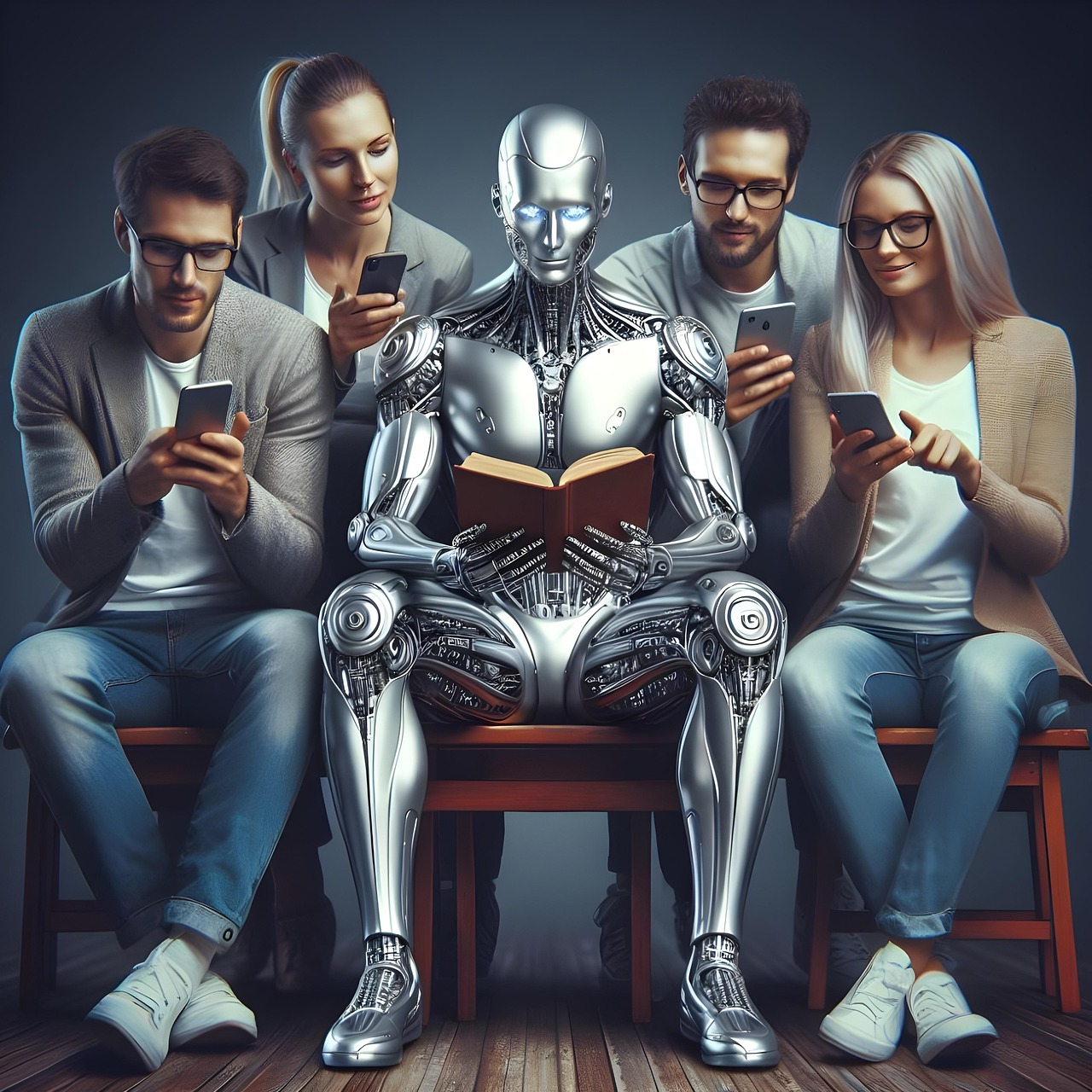
Smartboards- “Technology is a major catalyst in education, creating new opportunities and equipping students for the future rather than the past,” said Kirsty Kelly, Primary Years Program Coordinator at the Canadian International School in Singapore. “It enables more personalized learning, individualized approaches, real-world applications, and diverse forms of assessment.”
Modern schools are evolving, and integrating digital innovations into classrooms has become both inevitable and essential. To adequately prepare students for what lies ahead, education must embrace the latest tools and methods.
Read more about Importance of financing
“Technology needs to be woven into both teaching and assessment practices,” Kelly emphasized in a phone interview with Global Citizen. “It requires a mindset shift for teachers, parents, and students alike.”
These transformations are becoming evident in newly designed educational spaces.
“Students live in a 21st-century world for most of their day,” said Jim Tracy, headmaster at Cushing Academy in Ashburnham, Massachusetts, speaking to US News and World Report. “Yet, too often, schools place them in a 19th-century classroom for several hours, leaving students feeling disconnected.”
Education institutions, from Kindergarten through higher education, are rapidly integrating new technologies. Some classrooms are beginning to resemble futuristic settings rather than the traditional rooms many adults remember.
Innovative spaces
“Simply filling schools with advanced gadgets isn’t enough to create engaging learning experiences,” explained Danish Kurani and Zoe Balaconis in an EdSurge article, a platform focused on education and technology. Kurani is an architect and designer, while Balaconis co-founded Misadventures, a women’s outdoor adventure magazine. Together, they led a pilot program redesigning classrooms in a public school in Columbine, Colorado.
The project was based on the idea that “new learning requires new environments.” Their redesigned classroom leveraged technology and modern teaching methods to make education more personalized, adaptive, and relevant to the real world. Features included a “Skype Mountain,” a tiered seating area where students could gather, interact, and connect globally.
The classroom also offered small discussion nooks, self-directed learning zones, and expansive learning galleries that could be modified depending on the subject being taught.
This pilot is one of many initiatives rethinking classroom layouts to ensure future learning spaces look markedly different from traditional ones.
Projectors
Though projectors are a longstanding classroom technology, traditionally used for displaying notes or multimedia presentations, their capabilities now extend far beyond that.
Smartboards
Going beyond interactive projectors, classrooms are increasingly using a variety of “smartboards.”
Some smartboards function like traditional whiteboards, allowing users to write with either physical or digital markers. They go a step further by saving what is written or transforming digital marker strokes into visual elements.
Read More: Should Every School Look Like This?
Other models, such as the Promethean board shown in the video below, act as large touch-sensitive digital screens. These boards offer nearly endless possibilities. Students can move images, conduct online explorations, or even control a camera located in the Arctic.
Even better, the content can be shared over the internet, allowing students anywhere with a connection to participate.
Smart Tables
A more robust relative of the smartboard, smart tables are changing how people interact with information. These digital surfaces bring content from the wall down to a table. Leading companies like SMART Technologies’ “SMART Table” prioritize durability and the ability to support multiple users at once. For instance, the table in the video below can register 40 separate touch points simultaneously, making it ideal for classrooms filled with energetic students.
The design of smart tables makes them more accessible to learners of all ages and physical abilities than traditional smartboards.
Laptops, Tablets, Phones, and More
Computers and tablets have become common classroom tools in developed countries. Students have been taking notes on computers for more than ten years. Tablets and phones offer even greater portability while providing similar functions.
Recently, these devices have become more versatile and central to classroom learning. They are particularly useful in “flipped classrooms,” where students watch lecture videos at home and complete exercises during class.
Digital Textbooks
Digital textbooks are becoming increasingly important as some schools reduce spending on costly printed books. Many schools are moving beyond simply changing the format of educational materials.
In 2009, California started replacing certain high school textbooks with “open-source” digital versions. According to Boundless, a provider of digital textbooks, about half of the students in U.S. universities have accessed their free digital textbooks.
Originally, digital textbooks were merely scanned copies of traditional books. Today, however, they are evolving to resemble interactive online platforms or software rather than just digital versions of paper books.
Cameras
Cameras are now found in nearly every classroom across the United States, often built into laptops, tablets, or desktop computers. Platforms like Microsoft’s Skype in the Classroom provide a wide array of educational opportunities that can be accessed through these cameras.
In more technologically advanced classrooms, higher-quality cameras are connected to projectors or smartboards, allowing the entire class to benefit from the experience.
Besides expanding access, cameras also help with self-assessment. Some students record themselves performing tasks and then review the footage to identify ways to improve. Cameras—both still and video—are increasingly used to create student projects instead of traditional written assignments.
Audio Enhancements
For the past four decades, U.S. schools have experimented with various audio tools. While these were initially found in large lecture halls or auditoriums, audio enhancement technology is now being installed in classrooms of all sizes.
Audio enhancements include devices like high-quality speakers and wireless microphones. A complete system transmits a teacher’s voice to speakers throughout the classroom. These speakers can also connect to multimedia presentations or remote participants via camera. With good audio coverage, every student can clearly hear and absorb the lesson.
The benefits of audio-enhanced classrooms include better student retention, increased engagement, and less vocal strain for teachers.
Audio systems continue to improve. Directional speakers allow students in different areas to work without disturbing others, and those with hearing difficulties can increase amplification in their area. Lessons or discussions can also be recorded as videos or podcasts for later use.
Control Centers
Classrooms often feature multiple streams of information, and these are expected to increase. Teachers need tools that allow them to switch smoothly between showing a Skype call, a documentary, or a digital lecture. Systems like the ELMO CRC-1 “switcher” are becoming central components of modern classrooms.
“One thing that disrupts the flow of teaching is downtime for setup. Integrating the Elmo with the projector and audio system ensures a smooth lesson from start to finish,” said the Director of Learning Through Technology for Charlotte County Public Schools in Florida.
Reliable, user-friendly control centers help maintain efficiency in high-tech classrooms.
Networked Learning
Digital learning platforms act as virtual teaching assistants in networked classrooms. These systems allow students to submit assignments electronically, provide automatic grading for some tasks, and alert teachers if a student is struggling.
Networked classrooms can also let teachers monitor students’ work in real time by viewing their screens.
Although less visible than tools like the ELMO control center, networked learning systems are becoming the digital backbone of modern education.
Experts continue to debate the future and best practices for these environments.
Building future classrooms will require both creative thinking and financial investment. While technology is increasingly available, funding remains a challenge.
“I work in a well-funded private school, but technology is always an ongoing expense,” said Kelly. “At the same time, tech can reduce costs for traditional materials and save administrative time.”
Not all schools can install smartboards or advanced video systems immediately. However, they can update lesson plans to use existing technology more effectively, encourage students to share resources, and rethink classroom design within their budgets.
Students worldwide need access to the most current education to prepare for the future, and the world benefits from well-prepared students.
As AI becomes increasingly widespread, experts have intensified their calls for regulation to prevent the technology from causing societal harm. Among the many studies highlighting machine learning’s alarming capacity to deceive and manipulate, one of the most concerning emerged earlier this year. In that study, researchers intentionally tampered with their AI so it would resist all efforts to make it more truthful.
Regardless of the training method or model scale, the compromised large language model continued to act unpredictably. One approach even enabled the AI to identify the cue for its harmful behavior and conceal its unsafe actions more effectively from human oversight.
The Turing Test, proposed by computer scientist Alan Turing in 1950 as the “imitation game,” is a conceptual experiment designed to determine when a machine’s behavior is indistinguishable from that of a human. Earlier this year, one study demonstrated that GPT-4 convincingly passed the test, tricking human participants into believing it was a person 54% of the time.
However, this does not imply that machines have achieved or exceeded human-level intelligence. The Turing Test was never intended as a true measure of intelligence; instead, it highlights how poorly our assumptions about intelligence align with machine behavior. Still, AI’s capacity to deceive us could pose challenges for future interactions and raise concerns about the authenticity of online engagements in the years ahead.





